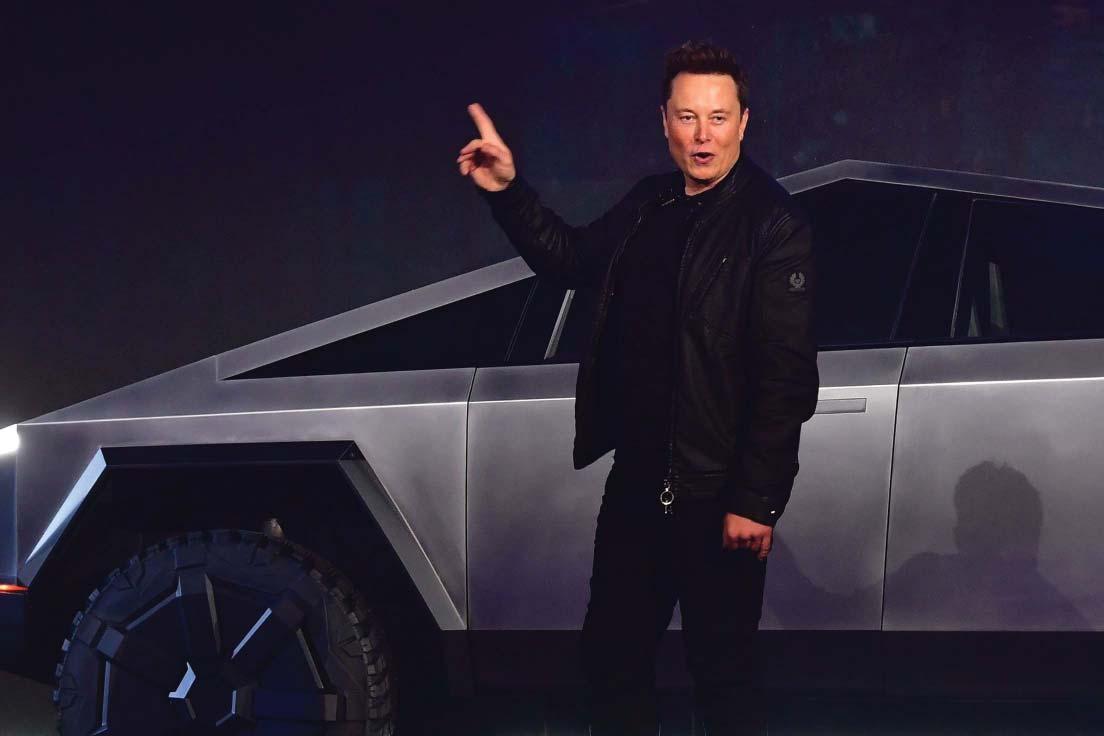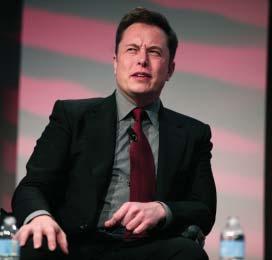
5 minute read
The remaking of Elusive Elon Musk
As you may already know, Tesla’s stock prices have gone through the roof in recent months. This has come as a shock to many who wrote off Elon Musk and his now-thriving company after their rocky start to 2019. There were concerns surrounding demand and profitability, as Tesla posted losses of around $1 billion in early 2019, however their stock managed to bounce back by the end of the year. Not only did it bounce back, it skyrocketed. Share prices reached all time highs, and the company reported profits in the final two quarters. Tesla hit another big milestone when it became the first US automaker to reach a market cap of $100 billion
in early 2020. This number has only increased since then, and means that Tesla is nearly double the size of General Motors and Ford combined, with only Toyota ahead of them. But how did we get here? How did Elon Musk, the company’s CEO and biggest shareholder with a net worth of just under $40 billion, push Tesla out of the darkness and back into the shining light of success? Let’s take a look at some of the recent moves made by Elon and Tesla to figure it out. Oppenheimer analyst Colin Rusch’s target price on Tesla went from $385 to $612, which is an almost 60% increase. Rusch cited Tesla’s risk tolerance, implementation of lessons from errors in the past, and more ambition than competitors and peers as reasons for this. He says Musk’s company poses a very real threat to others who are not able and/or willing to innovate at a pace that matches that of Tesla.
Advertisement

Despite reporting losses at the beginning of 2019, Tesla proved profitable by the third quarter. This came as a delight to investors around the holiday season.
China
Elon decided to take his company to China, with the first vehicles being sold in December 2019. This step is a big one towards the CEO’s goal of Tesla becoming a global automotive company, spreading his electric vehicles all over the world. This move allows the Chinese to avoid hefty tariffs when choosing to purchase American cars. Wall Street has been impressed by Tesla’s rising number of deliveries as well as their new China factory. The company has vowed to improve sales by over a third in 2020 in order to exceed half a million units “comfortably”. In 2019, the company delivered 367,000 vehicles globally. Tesla has plans for its China branch to deliver 150,000 vehicles per year alone.
Underground Tunnels
Musk’s drive to innovate and create something that strays from the norm shows both in his desire to create underground tunnel systems, as well as in the final product of his Cybertruck. Unlike the Cybertruck, the tunnels have yet to fully come to fruition. However, this does not mean Musk is done with the idea, as he believes these tunnels could do wonders for congestion. The construction of the first of two tunnels has been completed underneath the Las Vegas Convention Center, and they are set to debut in January 2021. This project is meant to help people get around the convention centre quickly and easily, reducing a 15 minute walk to a 1 minute ride. However, Musk has much bigger plans for these tunnels, with the end goal being to connect Los Angeles with Las Vegas. Some believe this will only spread the congestion, but Musk thinks people are underestimating the potential of what underground tunnels could do: “The deepest mines are much deeper than the tallest buildings are tall, so you can alleviate any arbitrary level of urban congestion with a 3D tunnel network.”
The Cybertruck
When discussing the design of the Cybertruck on a Third Row Tesla Podcast episode earlier in the year, Musk said: “You want to have these things that inspire people and feels different,” Adding: “Everything else is the same, like variations on the same theme.” His inspiration for the unique design came partially from the car he bought in 2013 that had been used in The Spy Who Loved Me, the classic James Bond movie from 1977. Musk paid just shy of $1 million for the 1976 Lotus Esprit sports car. The failure of the “bulletproof” windows demonstration at the unveiling of the Cybertruck did cause Tesla’s stock to decrease by 6%, however this did not impact the amount of pre-orders made. Musk announced on Twitter near the end of November 2019 that there had already been 250,000 pre-orders. It’s important to note that a pre-ordering a Cybertruck only costs $100

for processing costs, however this is not the same as a deposit. For a pre-order to become a successful sale, there is a purchase agreement that must be signed. It has not been revealed how many of the original 250,000 pre-orders and the others that followed turned into actual sales.
The Future
The future is looking bright for Tesla, as ARK Investment Management updated their valuation model. The firm has estimated that the by 2024, Tesla’s stock could be priced at a whopping $7000 per share. They also say this could go up to as much as $15,000 in a best case scenario. While the company has yet to be profitable on an annual basis, the third and fourth quarter of profitability last year gives hope to Tesla and its investors that it will continue on this path. The company is not looking to be a niche manufacturer, but rather a global electric-vehicle producer. This transformation is looking more and more promising as the stocks have seen an increase of almost 170% in the last six months. However, the construction of Tesla’s new factory near Berlin has been temporarily halted due to environmental concerns, so this expansion is not without its obstacles.
Possible Issues
The coronavirus outbreak could lead to some issues for Musk and his company. While the factory in China has, until now, been seen as a purely positive, smart move for Tesla, that view may change very quickly. The virus has already killed just under 2000 people globally, and has infected tens of thousands all over the world. The spread of the virus is terrifying to people across the globe, and this fear has the ability to negatively impact Tesla’s results. Tesla has been on a steady road to recovery after last year’s rocky start, but will China be its next downfall?










